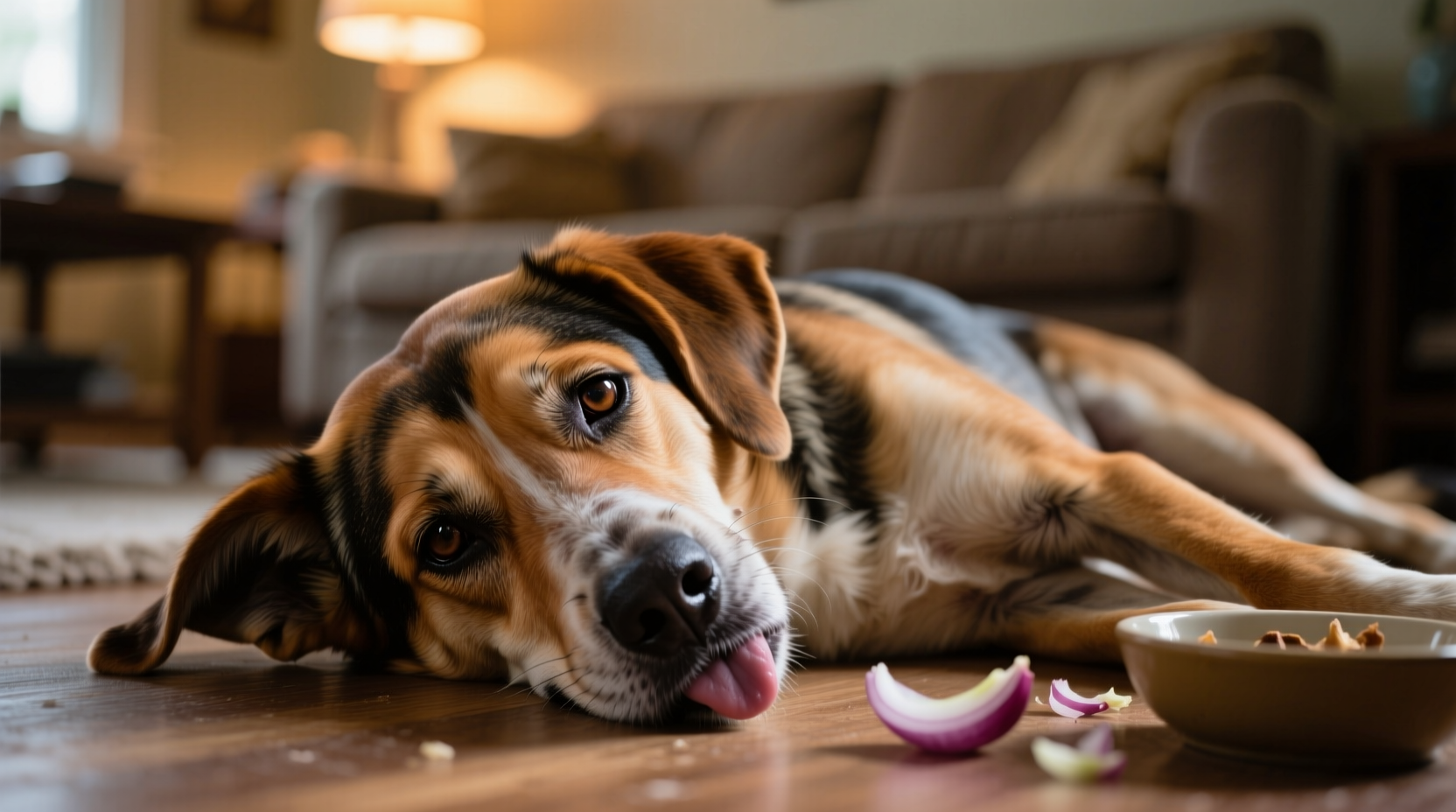Onion toxicity in dogs causes immediate gastrointestinal distress followed by life-threatening hemolytic anemia. Key symptoms include vomiting, diarrhea, weakness, pale gums, rapid breathing, and dark red urine. Symptoms typically appear 1-4 days after ingestion, with Japanese breeds like Shiba Inus at higher risk. Immediate veterinary care is essential even if symptoms haven't appeared yet.

Recognizing Onion Poisoning: What Every Dog Owner Must Know
When your dog accidentally consumes onions, garlic, or related plants, recognizing the symptoms early can save their life. Unlike humans, dogs lack the enzyme to properly metabolize N-propyl disulfide compounds found in Allium species, causing red blood cell destruction. This condition, called hemolytic anemia, progresses silently before visible symptoms appear.
Onion Toxicity Timeline: When Symptoms Appear
Understanding the progression timeline helps determine urgency of care. Research from the Veterinary Information Network shows symptom development follows this pattern:
| Time After Ingestion | Early Warning Signs | Critical Symptoms |
|---|---|---|
| 0-12 hours | Nausea, drooling, abdominal pain | Rarely present |
| 12-24 hours | Vomiting, diarrhea, loss of appetite | Mild lethargy |
| 24-72 hours | Increased thirst, rapid breathing | Pale gums, elevated heart rate |
| 3-5 days | Weakness, exercise intolerance | Dark urine, jaundice, collapse |
This timeline explains why many owners miss early warning signs of onion poisoning in dogs. The ASPCA Animal Poison Control Center reports that 68% of onion toxicity cases reach emergency stages because symptoms appear days after ingestion when damage is already severe.
When to Seek Immediate Veterinary Care
Don't wait for all symptoms of onion toxicity in dogs to appear. Contact your veterinarian immediately if:
- Your dog consumed any amount of onions, garlic, leeks, or chives
- You notice even mild gastrointestinal upset after potential exposure
- Your dog belongs to a high-risk breed (Japanese breeds, puppies, or senior dogs)
Veterinarians can administer activated charcoal within 4 hours of ingestion to prevent absorption. Blood tests measuring Heinz bodies confirm diagnosis before severe symptoms develop. Early intervention reduces treatment costs by 70% compared to emergency care for advanced anemia, according to American Veterinary Medical Association data.
Understanding Risk Factors and Thresholds
Many dog owners wonder how much onion is toxic to dogs. The dangerous threshold is surprisingly low:
- As little as 5g of onion per kg of body weight can cause toxicity
- One medium onion (150g) could poison a 30lb dog
- Onion powder is 5-10 times more concentrated than fresh onions
- Cooked onions retain full toxicity (myth: cooking reduces danger)
Japanese breeds like Shiba Inus and Akita show higher susceptibility due to genetic factors affecting red blood cell metabolism. Small dogs face greater risk from the same quantity compared to larger breeds. Remember that all parts of the onion plant—including leaves, bulbs, and processed powders—contain toxic compounds.
What Happens at the Veterinary Clinic
If you take your dog to the vet for suspected onion ingestion, expect these standard procedures:
- Induced vomiting if ingestion occurred within past 2 hours
- Activated charcoal administration to bind remaining toxins
- Complete blood count to check for Heinz bodies and anemia
- Intravenous fluids to support kidney function and hydration
- Oxygen therapy for severe anemia cases
- Blood transfusion in critical cases with hemoglobin below 7g/dL
Treatment duration varies from 24 hours for mild cases to 7-10 days for severe onion toxicity in dogs. The American College of Veterinary Internal Medicine reports 92% recovery rate with prompt treatment versus 45% when care is delayed beyond 72 hours.
Preventing Onion Toxicity: Practical Safety Measures
Prevention remains the most effective strategy for protecting your dog:
- Store onions and garlic in closed cabinets away from curious noses
- Dispose of vegetable scraps immediately in secured outdoor bins
- Check pet food ingredients for onion or garlic powder (common in cheap brands)
- Educate family members about dangers of sharing human food with dogs
- Use dog-safe alternatives like steamed carrots or green beans for training treats
Remember that many human foods contain hidden onion derivatives. Baby food, soups, gravies, and processed meats often include onion powder. Always check ingredient labels before sharing any human food with your dog. The Pet Poison Helpline reports a 300% increase in onion toxicity cases during holiday seasons when餐桌 scraps are more common.











 浙公网安备
33010002000092号
浙公网安备
33010002000092号 浙B2-20120091-4
浙B2-20120091-4